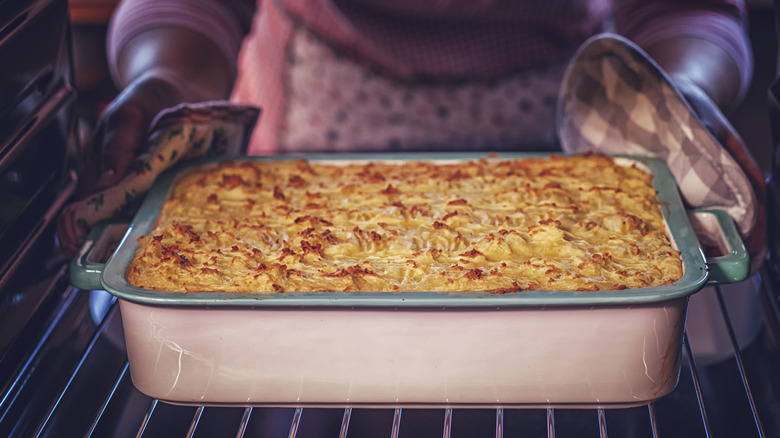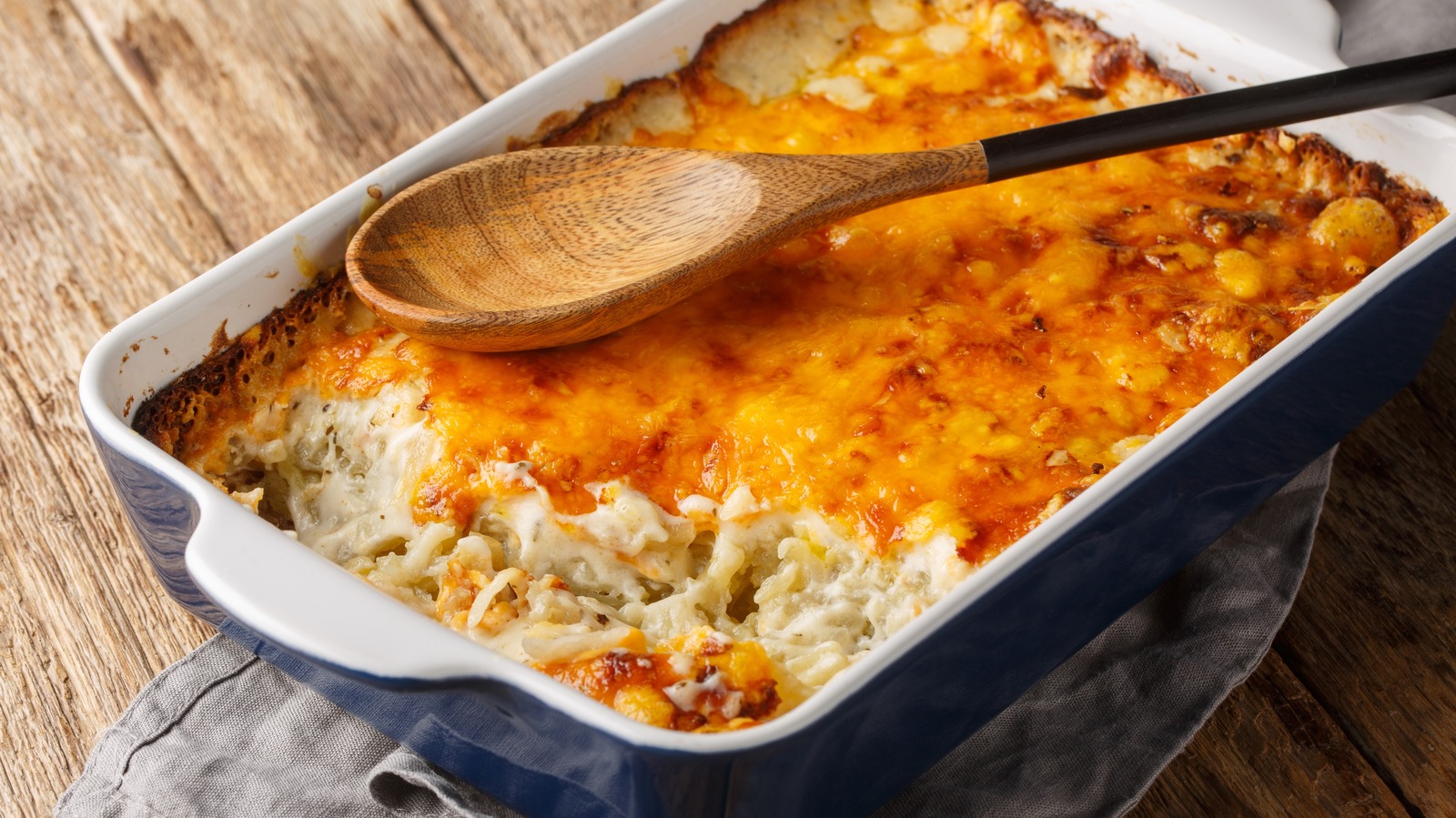Whether you’re a professional chef or you’ve never opened an oven in your life, you’ve probably heard of a 9×13 pan. It’s the standard casserole dish, followed closely by the smaller 8×8 (or 9×9) square pan or, even more distantly, the oval dish. But just knowing the sizes of cookware does not mean your meal will come out perfectly. It’s how you use those pans that will lead you to success.
Above all, the most important thing to do is to follow your casserole recipe. If the recipe calls for a 9×13 pan, it’s because through all the trials and testing to perfect the recipe, that pan yielded the best results. If a recipe calls for a 9×13 dish and you only have an 8×8, you certainly can use the smaller pan, but you could run into a multitude of issues, including spillage and undercooked food.
If a savory recipe doesn’t call for a specific dish, you’re probably safe to default to a standard 9×13. Desserts, like brownies, cobblers, and cookie bars, are commonly baked in a smaller square dish.
Casserole dish problems and how to fix them

There are plenty of other considerations to make when choosing a casserole dish. First, you need a dish big enough to hold all the contents of your meal. However, you should not be filling your casserole container more than ¾ full. If a dish is more than ¾ full, it may take longer to cook (and still come out raw in the middle), be too crispy or burned on the edges, or be a pain to clean up. Following the ¾ rule allows certain ingredients, such as rice or pasta, to naturally expand and provides a safety net in case of bubbling over. On the other hand, you also don’t want a dish that’s too big. An oversized dish for a smaller casserole will cause the food to dry out or burn.
Materials matter, too. Ceramic and cast iron pans are the best options for casserole dishes. Both materials are great at evenly distributing and retaining heat. Glass conducts heat well enough, and has the added benefit of transparency — you can simply peer through the sides of the dish to determine if the food is done.
While a metal baking dish may be the cheapest option, it isn’t the best option quality-wise. Metal is a fantastic conductor of heat, and while that may be good for brownies with an ooey-gooey center and crispy edges, the last thing you want for a casserole is a squishy middle and overcooked crust. And if it heats up fast, it also cools down fast; and nobody likes a cold casserole.







